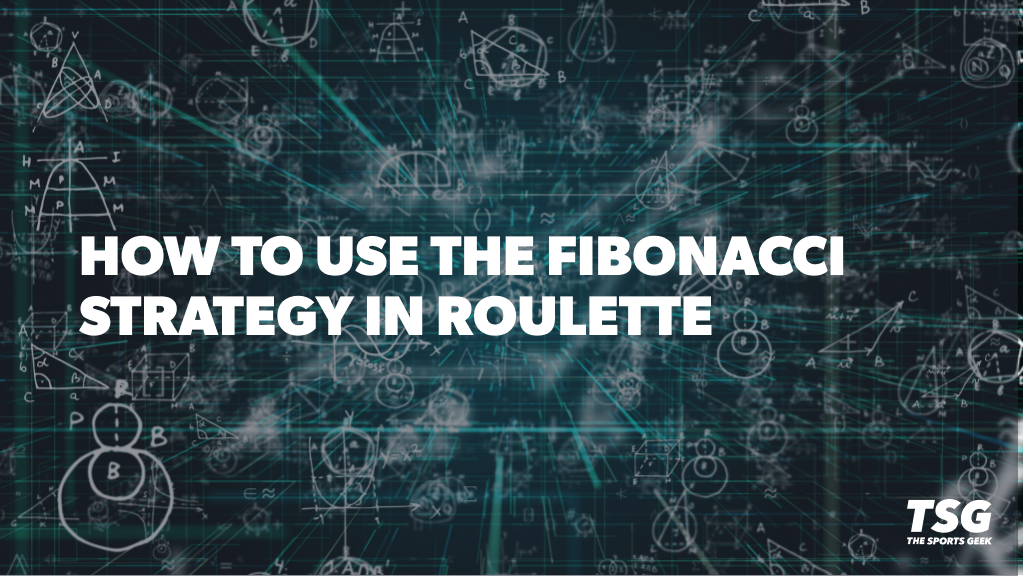
The Fibonacci roulette strategy uses one of the most famous mathematical sequences. But does this system work for roulette? In theory, yes, if you have an unlimited bankroll and play on tables without betting limits.
Since both are impossible in practice, it’s important to understand how to operate the Fibonacci system, what the sequence looks like, and the flaws of this strategy. Let’s start with the basics.
What Is the Fibonacci Roulette System?
The Fibonacci system is a negative progression strategy in which you increase your stake every time you lose and return to your initial stake after each win.
You use the Fibonacci sequence to determine each wager after losing one. The principle is simple: your bet should be equal to the sum of your previous two bets. Here’s a quick example of how this works with a starting wager of $1, with the numbers in the brackets representing the sum of the previous two bets:
- First bet: $1
- Second bet: $1 ($1 + 0)
- Third bet: $2 ($1 + $1)
- Fourth bet: $3 ($1 + $2)
- Fifth bet: $5 ($2 + $3)
The same principle applies to every subsequent wager. The Fibonacci strategy for roulette is primarily used for bets that have a near 50% chance of winning, such as betting on red or black, odd or even, or high (19-36) or low (1-18) numbers.
You should know that the Fibonacci roulette system does not affect the house edge!
In theory, negative progression strategies like Fibonacci prevent you from losing. You make up your losses over time by betting higher and higher amounts to cover previous losses. In practice, the betting limits of the casino and the limitations of your bankroll mean that you should be very careful.
Step-by-Step Fibonacci Roulette System Guide
This Fibonacci system relies on a famous math sequence, but you do not need to be a mathematician to use the Fibonacci sequence in roulette. You can try this strategy by following these simple steps.
1. Set Your Bankroll and Stake Amounts
The first step to successfully using the Fibonacci system is setting your bankroll and deciding on bet sizes. The stake amount you pick is especially important when you are using a negative progression system like this one.
You will be increasing your stake after losses with the Fibonacci roulette strategy, so you do not want to pick a stake amount that is too high. You should aim at a bet size that can survive at least 10 consecutive losses, ideally more.
For example, if you start at $1, you need $143 to survive 10 steps of the Fibonacci system. Keep that in mind when deciding on what stakes to use.
2. Memorize Fibonacci’s Sequence
After setting your bankroll and stake amounts, the next step is to learn Fibonacci’s sequence. There are two options here. The first one is to memorize the logic behind it that each bet after losing equals the previous two bets.
That’s the easier option for me, personally, but others prefer to memorize the numbers. Here’s what the first 11 steps look like:
0, 1, 1, 2, 3, 5, 8, 13, 21, 34, 55
Since you can’t bet $0, you essentially start from step 2 and place $1. If your bankroll allows a higher opening stake, simply multiply the Fibonacci sequence by that number to find the suitable wager.
For example, if you want to start at $5, step 1 and 2 would be $5 (1 X 5), step 3 becomes $10 (2 x 5), step 4 becomes $15 (3 x 5) and so on.
3. Place Your Wagers and Go!
Once you have completed the two steps above, the fun can begin. You can place your roulette wagers using your starting stake amount as you normally would.
- Sequence: You use the Fibonacci sequence to determine the amount of your bet. If you start with a $1 bet, your sequence of bets will be $1, $1, $2, $3, $5, $8, $13, and so on, always following the Fibonacci sequence.
- Progression: Start by betting the first number in the sequence. If you lose, you move one step forward in the sequence for your next bet. If you win, you move back two steps in the sequence for your next bet (if possible, or start over if you’re at the beginning).
In theory, you can place any bet you want. However, the roulette Fibonacci strategy works better with even-money wagers.
Examples of even money bets in roulette include:
- Red or Black
- Odd or Even
- High or Low
4. Continue This Pattern Until It Is Time to Stop Playing
Continue using the Fibonacci roulette system until it’s time to stop. It’s pivotal to always end on a winning wager, so you can make up for all losses before that and end up ahead.
Expert Tip:
You can practice playing for free at certain casinos to learn to use the sequence. For example, Bovada has 7 roulette variations you can try for free. These include American. European and Dragon Roulette.
Is the Fibonacci Roulette Strategy Good?
The Fibonacci sequence is a nice way to manage your bankroll at roulette, but it doesn’t reduce the house edge, and the casinos have table limits that work against you. That’s why the system is simply a tool at your disposal, not a true winning strategy.
If you decide to give it a go, I strongly recommend finding a French roulette table. The house edge on even odds bets in this version of the game is only 1.35%, compared to 2.7% in European roulette and 5.26% in US roulette.
Red Dog Casino is one of the few roulette sites that offer French Roulette, so that’s a good place to start!




You must be logged in to comment. Don't have an account? Sign up today.